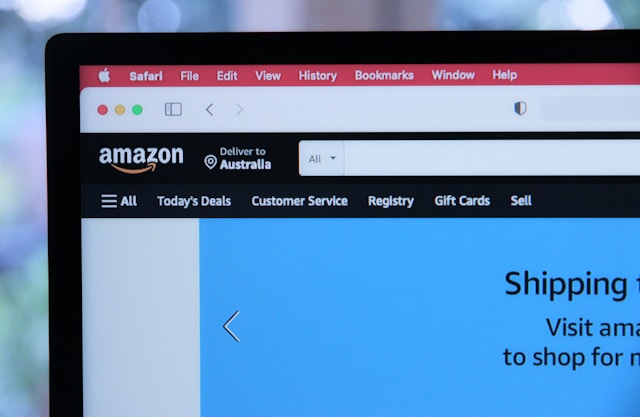「なぜ人はあの商品を選ぶのか?」この疑問を解き明かすカギは、消費者心理にあります。私たちの購買行動は、意識的な判断だけでなく、無意識の心理的要因にも大きく左右されているのです。
このページでは、消費者行動を心理学的視点から解説します。例えば、なぜセール品に飛びつきやすいのか?それは「希少性の原理」という心理が働いているからかもしれません。認知バイアス、感情、意思決定プロセスといった心理学的概念を、マーケティングの文脈で深く掘り下げていきます。
認知バイアス
認知バイアスとは、人間の思考や判断に影響を与える心理的な傾向や偏りのことで、消費者行動に大きな影響を与えます。認知バイアスを理解することで、消費者の思考や意思決定プロセスに合わせた戦略を立てることができます。
定義: 意思決定の際、最初に得た情報に過度に依存する傾向。
マーケティングへの応用例:
- 交渉における高めの初期オファー
- 「通常価格100ドル、今なら75ドル!」
- ソフトウェアの複数な価格設定(「最も人気のあるプラン」を強調)
注意点:
- 製品の本来の価値に基づいた公正で有利なアンカーを設定する。
- 価格を人為的に吊り上げて消費者の認識を操作することは避ける。
- 初期価格が製品の真の価値を正確に反映していることを確認する。
Appleの価格戦略
Appleは、iPhoneの価格設定においてアンカリング効果を巧みに利用している。たとえば、新しいiPhoneシリーズを発表する際、最初に最も高価なモデルを提示。
🔗 iPhone 15 Proを999ドルで紹介。この高級モデルがアンカーとなる。
🔗 標準のiPhone 15を799ドルで紹介。 比較すると、低価格モデルがより手頃で合理的に感じられる。
- 消費者の「妥当な」iPhone価格の期待値が調整され、
- 高級モデルと標準モデルの両方の売上が潜在的に増加。
- 799ドルのモデルでさえ、お買い得に感じられる。

定義: 人が判断や決定を行う際、すぐに思い出せる情報や最近の経験に頼りがちな心理傾向のこと。簡単に思い出せる情報ほど、判断に大きな影響を与えるという認知の偏りを指す。
マーケティングでの活用例:
- 適度な頻度で放送される、押しつけがましくないテレビCM
- SNSを活用した広告キャンペーン
- 複数のウェブサイトやアプリにまたがる閲覧履歴に基づく追跡型広告
注意点: 様々な媒体を通じて一貫したメッセージを発信し、ブランドの認知度を高める。ただし、広告の頻度には十分注意を払い、消費者に不快感を与えたり、プライバシーを侵害したりしないよう配慮することが重要。
📍 広告の露出頻度を適切に調整し、ターゲット層に負担をかけずに、自然とブランドを思い出してもらえるような戦略を立てる。
コカ・コーラの広告戦略
コカ・コーラは、あらゆる媒体を駆使した広告戦略を展開している。テレビCMやSNS、街中の看板、映画でのさりげない製品登場など、様々な方法で消費者の目に触れ、記憶に残るよう工夫している。
この戦略の狙いは、消費者が清涼飲料を選ぶとき、真っ先にコカ・コーラを思い浮かべてもらうこと。
主な広告手段:
- テレビCM
- SNSを活用したキャンペーン
- 街中の看板広告
- 映画内での製品露出
戦略がもたらす効果:
- 炭酸飲料といえばコーラ、という連想を強める
- 消費者の記憶に深く刻み込まれる
- 商品選びの際の無意識の選択肢となる
- ブランドの認知度と想起率を高める
戦略の核心: コカ・コーラは、様々な媒体で一貫したメッセージを発信し続けることで、消費者の心の中に確固たる地位を築いている。この戦略は、人が思い出しやすい情報を重視する心理傾向(利用可能性ヒューリスティック)を巧みに活用している。その結果、炭酸飲料を選ぶ場面で、コカ・コーラが自然と思い浮かぶブランドとなっているのだ。

定義: 自分がすでに持っている考えや信念を正しいと信じたいがために、それを裏付ける情報を探し求め、反対する情報や意見は無視し、都合よく解釈してしまう傾向のこと。
マーケティングでの活用: ポジティブなブランド認識を強化し、潜在的なネガティブなバイアスには事前に対処。
具体例:
自社と同じ価値観を持つインフルエンサーを起用し、信頼性を高める
厳選された顧客の声を紹介する
消費者のよくある質問に、事前に答えを用意しておく。
📍 ポイント: 定期的に消費者の感情を分析し、ターゲット層が持つ先入観に適切に対応する。
定義: 多くの人が支持しているという事実に影響され、人々が同じ意見や行動を取る傾向のこと。製品やサービスが多くの人に使われているという情報が、その価値や魅力を高め、他の人々もそれを選ぶよう促す効果を指す。この言葉は、パレードの楽隊車(バンドワゴン)に多くの人が乗りたがる様子に由来している。
マーケティングにおいて、バンドワゴン効果は、製品やサービスの認知度を高め、購買意欲を刺激し、ブランドへの忠誠心を育てるのに効果的。
具体的な手法:
1️⃣ 社会的証明の活用
- 多くの顧客に支持されていることや高評価を得ていることを強調し、製品の信頼性を高める。
- 顧客の声や口コミを積極的に集めて公開し、潜在顧客の心を動かす。
3️⃣ ブランドコミュニティの形成
- ブランドのコミュニティを作り、既存顧客が新たな顧客を引きつける仕組みを作ることで、信頼とつながりを強化する。
2️⃣ 限定性と希少性の強調
- 「数量限定」や「限定販売」といった要素を取り入れることで、消費者の購買意欲を刺激し、早めの購入行動を促す。
📍 社会的証明を使って信頼関係を築くことは有効だが、偽りのデータを使ったり、同調圧力で消費者を追い込んだりすることは避ける。消費者に圧力をかけず、自然な形で決断を促すことが重要。
定義: 損失回避とは、人間の心理傾向の一つで、同じ価値の利得を得ることよりも損失を避けることを優先する傾向のこと。人は「得すること」より「損しないこと」に強く動機づけられる。
マーケティングへの活用: 損失を避けることに焦点を当ててオファーを提示する。ただし、透明性と信頼性を保ち、消費者に不必要な緊急感を与えないよう注意する。期限付きオファーの場合、正当な理由があることを示す。
具体例:
「今だけ!」といった期限付きのオファー。ただし、明確で正直な締め切りを設けること。
自動更新が明確に説明されている無料トライアル。
期限が近いポイントの使用期限を事前に通知するロイヤルティプログラム。
📍 損失回避を効果的に利用するには、条件を明確にし、緊急感を本物のものにすること。そうすることで顧客との信頼関係が築け、長く愛されるブランドになれる。
アマゾンプライムの無料トライアル戦略
Amazon Primeの無料トライアルは、損失回避をうまく活用したマーケティングの例。
初期オファー:30日間の無料トライアルで、Primeのすべての特典(無料配送、Prime Video、Prime Musicなど)が利用可能。
ユーザー体験:ユーザーはPrimeの便利さや特典に慣れていく。
期限切れ前:Amazonは、特典の期限切れを強調するリマインドメールを送信し、無料特典が失われることを知らせる。
心理的影響:Primeの特典を失う恐怖が、会費を払うことよりも大きな動機となり、多くのユーザーが有料会員へ移行する。
重要な洞察:Amazonは、新しいものを買う決断ではなく、すでに得たものを「失わない」ための決断に枠組みを変えている。特典を失う恐れが強力な動機付けとなる。
📍この戦略は効果的だが、消費者に対して、明確で簡単にアクセスできる解約オプションや、自動更新の条件について、透明性のあるリマインダーを提供することが重要。

感情のトリガー
マーケティングにおいて、消費者の購買行動を理解することは極めて重要である。消費者は、単に商品の機能や価格のみで購買を決めるわけではない。感情的な要素、すなわち「感情のトリガー」が、購買決定に大きな影響を与えているのである。
感情のトリガーとは、消費者の心に働きかけ、特定の行動を促す感情的な要素を指す。例えば、新商品発表会で驚きを与えることで購買意欲を高めたり、ブランドストーリーを通じて共感を呼び起こし、顧客ロイヤルティを向上させたりすることが考えられる。
主な感情のトリガーとマーケティングへの応用
定義:危険、痛み、危害の脅威によって引き起こされる不快な感情。
マーケティングへの応用:リスクを強調しながら、製品やサービスを信頼できる解決策として位置づける。ただし、消費者の恐怖を煽ったり、誇張したりすることは避け、事実に基づいた情報を提供して、適切な判断を促すことが重要。事実に基づいた情報を提供し、恐怖に頼らずに顧客が十分な情報を得た上で決断できるよう支援する。
例:
・保険会社が潜在的な損失を強調しつつ、具体的で実用的な解決策を提示。
・サイバーセキュリティ企業がデータ漏洩リスクを示し、具体的な予防策を提案。
・健康製品が基づいたメリットを訴求。
倫理的配慮:恐怖を利用したり誇張したりすることは避ける。事実に基づく解決策を提供し、消費者が操られていると感じるのではなく、適切な判断を下せるようにする。
定義:喜びや幸福の感情。
マーケティングへの応用:ブランドをポジティブな体験や結果と結びつける。
例:
・旅行会社が夢のバケーションを紹介食品
・ブランドが楽しさや団らんを強調
・テクノロジー製品が生活の質を向上させる方法をアピール
📍 真実に基づいたストーリーテリングを行う
定義:予想外の出来事による軽い驚きやショック。
マーケティングへの応用:マーケティングに予想外の要素を取り入れ、記憶に残る体験を創出する。
例:
・ゲリラマーケティングキャンペーン
・隠れた特徴を持つ製品の開封体験
・意外性のあるブランドコラボレーション
📍 驚きを与えるときは、関連性を持たせることが重要。混乱や不一致を避ける。
マーケティングへの応用: 顧客との信頼関係を築き、長期的な関係性を構築する。
例:
・透明性の高いビジネス慣習
・一貫した品質と顧客サービス
・第三者機関による認証や推薦
📍 顧客のフィードバックを定期的に収集し、それに基づいて改善を行う姿勢を示す。
定義:あるグループや組織に属しているという感覚。「私たちは一つだ」という一体感。
マーケティングへの応用:自社のブランドを中心に、顧客同士がつながり、一体感を味わえるようなコミュニティを築く。
例:
・製品やサービスを愛用する人を「アンバサダー」として活動してもらう
・顧客同士が意見交換できる場を設ける
・特定の顧客層に向けて、限定的なイベントや情報を提供する
ヒント:単にブランドと顧客のつながりを深めるだけでなく、顧客同士が互いを認め合い、共感し合えるような関係性を築く。
消費者行動の意思決定プロセス
消費者の購買決定過程を理解することで、消費者を効果的に導くことができる。
問題認識: 消費者がニーズや欲求に気づく段階
🔑 消費者が自分の問題を明確に認識できるようなコンテンツを提供する
⬇️
情報収集: 解決策を求めて情報を収集する段階
🔑 さまざまな情報源から、消費者が簡単に情報にアクセスできるようにする。
⬇️
選択肢の比較: 消費者が選択肢を比較検討
🔑 比較しやすいツールを提供し、自社の商品やサービスの優位性を明確に伝える
⬇️
購買決定: 消費者が購入を決定
🔑 購買プロセスを簡素化し、消費者の迷いを減らすことで購入を促進
⬇️
購買後: 消費者が製品やサービスを体験する段階
🔑 充実したサポートを提供し、消費者の声を聞くことで、改善の機会を見つける
⬇️
認知的不協和: 消費者は、購入後に「本当に正しい選択だったのか?」と不安になることがある。
🔑 購入後のサポート、ガイド、コミュニティを提供し、消費者の不安を解消
これらの心理的原則を理解することで、ターゲットに響くより効果的なマーケティング戦略を構築し、成功を促進することができる。
認知バイアスや感情的トリガー、意思決定プロセスから得られる洞察を取り入れることで、より魅力的で説得力のあるマーケティングアプローチが可能になる。
消費者の意思決定にどのように認知バイアスが影響を与えるかを理解したい方には、Bruhn、Gröppel‑Klein、Kirchgeorgの「The Influence of Cognitive Biases on Consumer Behavior」という論文がおすすめだ。この論文は、消費者行動を形作る心理的原則を詳しく探り、効果的な戦略を構築したいマーケターにとって貴重な知識を提供している。
あなたのマーケティング戦略をレベルアップさせませんか?
行動心理学の知見を活かして、マーケティング効果を最大化しましょう。 今すぐお問い合わせください。

